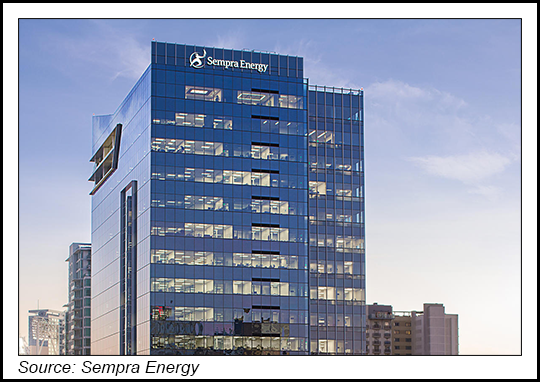Natural gas utilities can help lead the transition to a carbonless energy future in the United States, Sempra Energy CEO Jeffrey Martin said last week.

California, where two of Sempra’s three major U.S. utilities operate, has a regulatory proceeding to develop a strategy for a phased approach to developing a multi-decade strategy for gas. Martin also offered a national perspective on what is driving the California Public Utilities Commission (CPUC).
“For several decades the United States has led the world in reducing energy-produced emissions,” Martin told analysts during a third quarter earnings call. The International Energy Agency (IEA) estimated that energy emissions were held flat worldwide last year. “The U.S. economy last year grew by about 2.3% and reduced energy related emissions about 3%.”
IEA’s study forecast declining emissions in the industrialized parts of the world, and increases in energy emissions in the developing parts. “Since 2000, the United States has led the world in absolute declines in emissions,” he said, and a lot of it is due to replacing coal use with natural gas.
“Globally, the massive build-out of renewables combined with natural gas, and switching from coal, is a case study for getting liquified natural gas (LNG) into all the developing markets,” Martin said. “And whether it is China or India or Vietnam or Thailand, they have the opportunity to get a lot of renewables backed up by natural gas.”
Martin said this scenario is causing a reassessment of local distribution companies (LDC) and the role they can play, particularly currently in Europe. “Today European LDCs are outperforming U.S. LDCs by about 30%,” he said. “And the narrative in Europe is that LDCs are a big part of the carbon solutions by taking biomethane as renewable natural gas (RNG) and putting it into the distribution systems.”
Utility Group President Kevin Sagara outlined specific steps that Southern California Gas Co. (SoCalGas) is taking to advance a role for natural gas in future decades. “For Southern California Gas Co. it is a matter of things we are doing now, and how we are aligned with California’s energy goals,” Sagara said.
The goal is to have 5% RNG in the SoCalGas system by 2022 and 20% by 2030. “We will have reduced our fugitive methane emissions 20%, and we’re five years early in meeting the state’s mandate for 2025,” said Sagara, adding that the gas-only utility is playing a role in adopting hydrogen and various carbon capture approaches.
Sagara said the state ultimately needs greater penetration of renewable energy and electrification, but he stressed that natural gas is a function of getting higher renewable penetrations. In addition, “battery storage cannot supply the long-term storage that we need at times. Gas infrastructure enables more renewables on the grid.”
Martin and Sagara said that California is unique in having penetration rates of more than 90% for gas space and water heating.
“I think there is a growing recognition that we are in a transition, and natural gas is part of the answer to help get higher renewable penetration rates,” Martin said.
As a result of this past summer’s rolling blackouts, Martin said the state needs to build more in-state generation capacity, including gas peaking plants, and expand utility reserve margins from the current 15-17% range.
“That will be a future process that is carried out by the state’s three energy agencies — the CPUC, California Energy Commission and the California Independent System Operator,” Martin said.
In related news, Rapid City, SD-based Black Hills Corp. has set greenhouse gas (GHG) emission reduction goals for its six natural gas utilities that collectively serve more than one million customers.
The 50% reduction goal is set for 2035, using a 2005 baseline level of GHG from its gas utility operations in Arkansas, Colorado, Iowa, Nebraska, Kansas and Wyoming. For its electric utilities the goals are 40% by 2030 and 70% by 2040.
CEO Linn Evans said since 2005 the gas system has reduced emissions by 33%, and the electric operations have reached a 25% reduction. In Colorado, electric operations have reached nearly 50% reductions and is on track to reach 80% by 2030.
Evans said the utilities’ “goals are ambitious, yet achievable.” They depend on a combination of existing and new technologies.
“Investing in infrastructure safety and the environment are a priority, with programmatic upgrades continuing systemwide,” he said. “Black Hills Energy is committed to completing replacement of all remaining unprotected pipe before 2035.”
"gas" - Google News
November 10, 2020 at 05:20AM
https://ift.tt/2U9Wwxg
Natural Gas Utilities to Play Key Role in Decarbonization, Says Sempra Chief - Natural Gas Intelligence
"gas" - Google News
https://ift.tt/2LxAFvS
https://ift.tt/3fcD5NP
Bagikan Berita Ini















0 Response to "Natural Gas Utilities to Play Key Role in Decarbonization, Says Sempra Chief - Natural Gas Intelligence"
Post a Comment